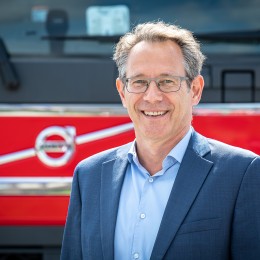We carry out intermodal transport to Poland for our customer Covestro. We load tank containers at Covestro’s production site in Antwerp (B), and transfer them by road to the Combi Terminal Twente (CTT) in Rotterdam (NL). From CTT, the tank containers continue their journey to Poland as rail freight. On arrival in Poland, we take care of the last-leg of the journey, using our own fleet of trucks to take the goods to the end customer.
Intermodal transport is sustainable. By transporting goods to Poland by rail, we’ve achieved around a 46% reduction in CO2 emissions compared to transport by road. By way of illustration, a single train journey is the equivalent of 88 road transport journeys. We recently started operating in the same way from Dormagen in Germany, where Covestro also has a production location. From Dormagen, tank containers are transported by rail to Poland via Duisburg, Germany. With our sustainable efforts, we support Covestro in realizing its ambition: To make the world a brighter place".
Real time insight and connectivity are becoming increasingly important, so our tank containers are provided with track & trace. This allows us to monitor both the location of each container, and monitor its temperature remotely. Polyols have to be at a temperature of 20 to 30 ºC during unloading. While the tank container is still underway, the planners at our site in Kutno in Poland can see remotely whether it will need heating on arrival. This can then be included in the planning, to make sure that the last leg in the supply chain (from the terminal to the end customer) runs as efficient as possible. Our client can also view the status of the container on the online platform, and therefore gain insight into any changes from the agreed delivery time with their customer.
We offer a full-service partnership. After arrival of the tank container, our planning department in Kutno coordinates with the customer about when they want to receive the product. This may be planned earlier, or later if the customer’s storage tank doesn’t have enough space. The time slot for delivery can also be determined, which avoids waiting hours and saves costs. A win-win situation for everyone involved!
© 2018 - 2025 Nijhof Wassink













